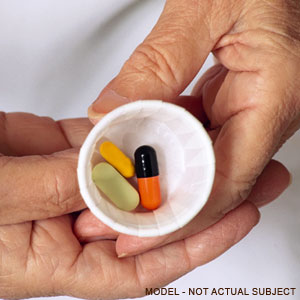Select Language - [Espanol]

3605 Long Beach Blvd., Suite 100
Long Beach, CA 90807
Phone: 562.981.2200

Diabetes is a disease in which blood glucose levels are above normal. People with diabetes have problems converting food to energy. After a meal, food is broken down into a sugar called glucose, which is carried by the blood to cells throughout the body. Cells use the hormone insulin, made in the pancreas, to help them process blood glucose into energy.
People develop type 2 diabetes because the cells in the muscles, liver, and fat do not use insulin properly. Eventually, the pancreas cannot make enough insulin for the body’s needs. As a result, the amount of glucose in the blood increases while the cells are starved of energy. Over the years, high blood glucose damages nerves and blood vessels, leading to complications such as heart disease, stroke, blindness, kidney disease, nerve problems, gum infections, and amputation.

The three main kinds of diabetes are type 1, type 2, and gestational diabetes.
Type 1 Diabetes: Type 1 diabetes, formerly called juvenile diabetes or insulin-dependent diabetes, is usually first diagnosed in children, teenagers, or young adults. In this form of diabetes, the beta cells of the pancreas no longer make insulin because the body’s immune system has attacked and destroyed them. Treatment for type 1 diabetes includes taking insulin shots or using an insulin pump, making wise food choices, exercising regularly, controlling blood pressure and cholesterol, and taking aspirin daily - for some.
Type 2 Diabetes: Type 2 diabetes, formerly called adult-onset or non-insulin dependent diabetes, is the most common form of diabetes. People can develop type 2 diabetes at any age, even during childhood. This form of diabetes usually begins with insulin resistance, a condition in which fat, muscle, and liver cells do not use insulin properly. At first, the pancreas keeps up with the added demand by producing more insulin. In time, however, it loses the ability to secrete enough insulin in response to meals. People who are overweight and inactive are more likely to develop type 2 diabetes. Treatment includes taking diabetes medicines, making wise food choices, exercising regularly, controlling blood pressure and cholesterol, and taking aspirin daily—for some.
Gestational Diabetes: Some women develop gestational diabetes late in pregnancy. Although this form of diabetes usually goes away after the baby is born, a woman who has had gestational diabetes is more likely to develop type 2 diabetes later in life. Gestational diabetes is caused by the hormones of pregnancy or a shortage of insulin.

Research has demonstrated that people at risk for type 2 diabetes can prevent or delay developing type 2 diabetes by losing a little weight. The results of the Diabetes Prevention Program (DPP) showed that weight loss through moderate diet changes and physical activity can delay and prevent type 2 diabetes. Participants in this federally funded study of 3,234 people at high risk for diabetes experienced a 5 to 7 percent weight loss. For example, a 5 to 7 percent weight loss for a 200-pound person would be 10 to 14 pounds.
Family history and overweight are strong risk factors for type 2 diabetes. DPP study participants were overweight and had higher than normal levels of blood glucose, a condition called pre-diabetes, also called impaired glucose tolerance. Both pre-diabetes and obesity are strong risk factors for type 2 diabetes. Because of the high risk for diabetes among some minority groups, about half of the DPP participants were African American, Alaska Native, American Indian, Asian American, Pacific Islander, or Hispanic/Latino.
DPP participants also included others at high risk for developing type 2 diabetes, such as women with a history of gestational diabetes and individuals aged 60 and older.
The DPP tested two approaches to preventing diabetes: lifestyle change - a program of healthy eating and physical activity - and the diabetes drug metformin. People in the lifestyle change group exercised about 30 minutes a day 5 days a week, usually by walking, and lowered their intake of fat and calories. Those who took the diabetes drug metformin received information on physical activity and diet. A third group only received information on physical activity and diet.
The results showed that people in the lifestyle change group reduced their risk of getting type 2 diabetes by 58 percent. In the first year of the study, people lost an average of 15 pounds. Lifestyle change was even more effective in those aged 60 and older. They reduced their risk by 71 percent. People receiving metformin reduced their risk by 31 percent.

Nearly 6 million people in the United States have type 2 diabetes and do not know it. Many have no signs or symptoms. Symptoms can also be so mild that you might not even notice them. Some people have symptoms but do not suspect diabetes.
Symptoms include
Many people do not find out they have the disease until they have diabetes complications, such as blurry vision or heart trouble. If you find out early that you have diabetes, then you can get treatment to prevent damage to your body.

Anyone 45 years old or older should consider getting tested for diabetes. If you are 45 or older and overweight - see the BMI chart - getting tested is strongly recommended. If you are younger than 45, overweight, and have one or more of the risk factors, you should consider getting tested. Ask your doctor for a fasting blood glucose test or an oral glucose tolerance test. Your doctor will tell you if you have normal blood glucose, pre-diabetes, or diabetes.

Pre-diabetes means your blood glucose is higher than normal but lower than the diabetes range. In 2007, at least 57 million American adults had pre-diabetes. Having pre-diabetes also means you are at risk for getting type 2 diabetes and heart disease. However, you can reduce the risk of getting diabetes and even return to normal blood glucose levels with modest weight loss through healthy eating and moderate physical activity. If you are told you have pre-diabetes, have your blood glucose checked again in 1 to 2 years.

To find out your risk for type 2 diabetes, check each item that applies to you.
The more items you checked, the higher your risk.

You can do a lot to lower your chances of getting diabetes. Exercising regularly, reducing fat and calorie intake, and losing a little weight can help you reduce your risk of developing type 2 diabetes. Lowering blood pressure and cholesterol levels also helps you stay healthy.
If you are overweight then take these steps:
If you are fairly inactive then take this step:
If your blood pressure is too high then take these steps:
If your cholesterol or triglyceride levels are too high then take these steps:
Making big changes in your life is hard, especially if you are faced with more than one change. You can make it easier by taking these steps:
Your doctor, a dietitian, or a counselor can help you make a plan. Consider making changes to lower your risk of diabetes.

Your weight affects your health in many ways. Being overweight can keep your body from making and using insulin properly. Excess body weight can also cause high blood pressure.
Body mass index (BMI) is a measure of body weight relative to height. You can use BMI to see whether you are underweight, normal weight, overweight, or obese. Use the Body Mass Index Table to find your BMI.
If you are overweight or obese, choose sensible ways to get in shape.

What you eat has a big impact on your health. By making wise food choices, you can help control your body weight, blood pressure, and cholesterol.

Regular exercise tackles several risk factors at once. It helps you lose weight, keeps your cholesterol and blood pressure under control, and helps your body use insulin. People in the DPP who were physically active for 30 minutes a day, 5 days a week, reduced their risk of type 2 diabetes. Many chose brisk walking for exercise.
If you are not very active, you should start slowly. Talk with your doctor first about what kinds of exercise would be safe for you. Make a plan to increase your activity level toward the goal of being active at least 30 minutes a day most days of the week.
Choose activities you enjoy. Some ways to work extra activity into your daily routine include the following:

Some people need medication to help control their blood pressure or cholesterol levels. If you do, take your medicines as directed. Ask your doctor about medicines to prevent type 2 diabetes.

We now know that many people can prevent type 2 diabetes through weight loss, regular exercise, and lowering their intake of fat and calories. Researchers are intensively studying the genetic and environmental factors that underlie the susceptibility to obesity, pre-diabetes, and diabetes. As they learn more about the molecular events that lead to diabetes, they will develop ways to prevent and cure the different stages of this disease. DPP researchers continue to monitor DPP participants to learn more about the study’s long-term effects through the Diabetes Prevention Program Outcomes Study.
People with diabetes and those at risk for it now have easier access to clinical trials that test promising new approaches to treatment and prevention. Participants in clinical trials can play a more active role in their own health care, gain access to new research treatments before they are widely available, and help others by contributing to medical research. For information about current studies, visit www.ClinicalTrials.gov.

National Diabetes Education Program
1 Diabetes Way
Bethesda, MD 20814–9692
Phone: 1–888–693–NDEP (6337)
TTY: 1–866–569–1162
Fax: 703–738–4929
Email: [email protected]
Internet: www.ndep.nih.gov
American Diabetes Association
1701 North Beauregard Street
Alexandria, VA 22311
Phone: 1–800–DIABETES (342–2383)
Fax: 703–549–6995
Email: [email protected]
Internet: www.diabetes.org
|
IMPORTANT: The information on this website is NOT intended to substitute for the expertise and advice of a qualified healthcare professional. We encourage you to discuss any decisions about treatment or care with a qualified healthcare professional. The mention of any product, service, or therapy is NOT an endorsement. Neither the author nor the publisher shall be responsible for any damage or harm caused by the improper use of information in this website. |
|
Any diagnostic or treatment options presented herein are for general informational purposes and may NOT necessarily represent tests or treatments that your healthcare professional performs, provides, or would recommend. The information is simply provided for educational purposes and in a good faith effort to help patients make a more informed decision about their healthcare. Furthermore, any tests or treatments presented herein may NOT be comprehensive with regard to all the diagnostic or therapeutic options that may be available for any given medical condition or disease. Accordingly, you should always discuss any decisions about treatment or care with a qualified healthcare professional. |
|
This website may feature actors, models, or artistic representations. The actors and models may NOT have actually used or provided any product or service described or promoted in this website. These actors and models may be identified with the notification: "Model" or "Model – not actual patient". If actual patients are featured, they may be identified with the notification: "Actual subject", "Real subject", and/or "Before vs. After". Artistic renderings of any medical condition, disease, or treatment in this website are for illustrative purposes only and may NOT be a realistic depiction of actual medical conditions, diseases, patients, or treatments. Actual outcomes of any medical condition or actual results achieved by any treatment may be significantly different due to variations in the delivery of healthcare and the individual circumstances of each patient. |
|
"Am I at Risk for Type 2 Diabetes" |